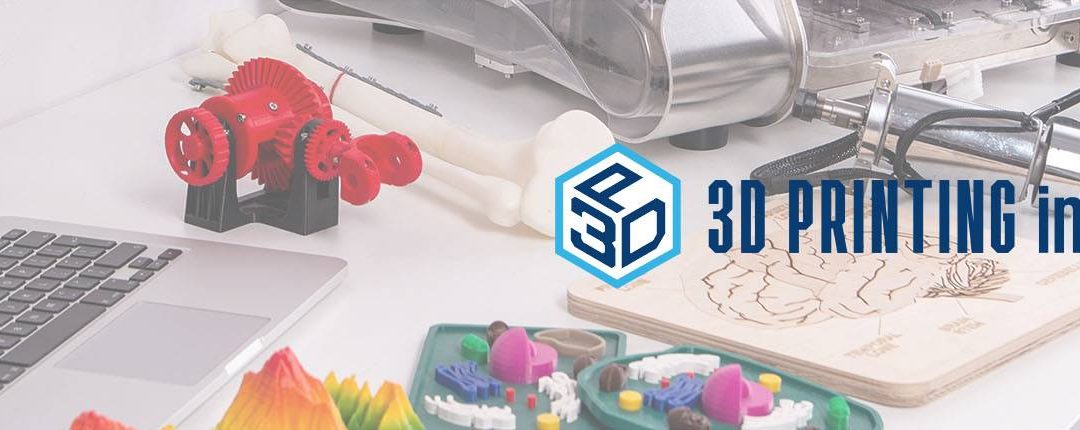“3D Printing in VET”, (project number 2019-1-EL01-KA202-062909) is a project funded by the European Commission through the Erasmus+ Programme (KA2, strategic partnership for innovation and exchange of good practices in the field of VET).
3D printing in VET will last 24 months (1-10-2019 to 30-09-2021) and it involves 6 partners from different countries: Karlsruher Institut für Technologie (Germany), European Education & Learning Institute (Greece), CENTRO INTERNAZIONALE PER LA PROMOZIONE DELL’EDUCAZIONE E LO SVILUPPO ASSOCIAZIONE (Italy), Escola Técnica de Imagem e Comunicação Aplicada (Portugal), UNIVERSITA TELEMATICA INTERNAZIONALE-UNINETTUNO (Italy), WYZSZA SZKOLA EKONOMII I INNOWACJI W LUBLINIE (Poland), INERCIA DIGITAL SL (Spain) and KEKAPER-REGION OF CRETE(Greece) which is the coordinator.
The project highlights the need for good quality upfront training of teachers when introducing new technologies including teaching approaches, and effective use of 3D printers in education and it will do so by providing a competitive training programme specialised for the VET teachers and educators, based on international experiences. The training programme will support teachers and educators to acquire the knowledge, skills and competencies needed for the use of 3D printers on several educational subjects being taught in VET sector.
The project has firstly investigated the essential skills and competences that a VET educator/ teacher has in order to use a 3D printer in a VET class. Based on research activities (IO1- Research report on 3D Printing Education and IO2- Needs Analysis report), partners will proceed to the definition of the standard key competencies for VET teachers in the field.
Regarding the first results of the project – IO1- Research report on 3D Printing Education partners discovered that with the growing importance of science, technology, engineering, and mathematics (STEM) subjects, 3D printing has taken on greater interest in schools. Some important aspects that partners discovered in this analysis are that 3D printing is not a simple didactic tool, it requires the definition of new teaching methods, and the redefinition of traditional training programs. Also, at the moment many trainers are not able to use 3D technology and there is the necessity to explore the possibility of defining VET qualifications, recognizable at European level, to attest the skills of trainers in the use of 3D printing in education.
To know more about this report please click on the following link:
IO1: https://drive.google.com/file/d/1Rkwv2bZpO0u0kVynZcYJtdbWLcsbW5GA/view?usp=sharing
Regarding the second result of the project – IO2- Needs Analysis report, even though the requirement for better practices and a sound procedure for 3D preparing for teachers is obvious, every community and context are unique, therefore has specific requirements. To understand these contextual needs, partners prepared a questionnaire. The study sample consists of answers given by 216 participants from all partner countries.
The collected and analysed results from the questionnaire in IO2/Task 3 showed that although more than half of the subjects has at least beginner level of knowledge about 3D Printing (%61), only 1 out of 4 participants took part in some kind of education or training program. The knowledge of modelling tools is crutial for 3D Printing practices. Most of the participants state that they have no prior knowledge about any modelling tools.
The survey shows the most popular modelling tool in every country is AutoCAD. Other common used tools are SketchUp, Revit and Rhinoceros. The vast majority, almost 90% of the participants, rated their creativity and willingness to experiment in general pretty high, from 3 to 5 in a scale of 1 to 5.
Looking at the study, we see that there is definitely a deficiency of educations and training programs for 3D printing available. The study revealed the need for further learning and training programs. The most desired kind of training offer by the subjects is practical workshops.
Want to know more? Click the following link to download the document:
IO2: https://drive.google.com/file/d/1aDuUuBd2tRUYOLmWZpLQ92Ck2NbPHWiW/view?usp=sharing
For more information, please visit the website and the Facebook page of the project.
